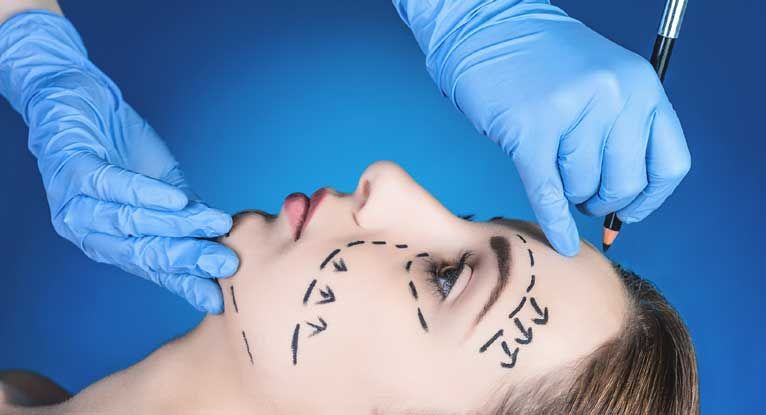Smashing – A foreign woman has become the center of public attention after admitting she has undergone more than 400 plastic surgeries over the past two decades. She spent approximately Rp 3.5 billion (around USD 220,000) to repeatedly alter her body and facial features. Her confession has sparked global discussions about the dark side of cosmetic surgery addiction often seen as a shortcut to perfection.
The woman revealed that her desire to look perfect stemmed from deep insecurity during her teenage years. Every time she looked in the mirror, she felt dissatisfied with her appearance. Her first procedure was a rhinoplasty at the age of 20. From that moment, she found herself trapped in an endless cycle of fleeting satisfaction and an urge to “fix” something new.
This case reignites worldwide debates about the psychological and physical risks of beauty obsession, especially in the age of social media where unrealistic beauty standards dominate public perception. Many have praised her courage for speaking out, while others expressed concern about her mental and physical condition.
Read More : Celebrities Who Have Partied at Club de Lisa
The Beginning of a Cosmetic Surgery Addiction

According to her account, the first operation went smoothly and gave her an immediate confidence boost. Compliments from people around her strengthened the belief that physical change could lead to happiness. However, that feeling didn’t last long. Each time she noticed a small imperfection, she felt compelled to fix it through another surgery.
She went on to undergo numerous procedures, including facelifts, fillers, botox injections, and liposuction. Over the years, she changed the shape of her eyes, cheeks, jawline, and lips multiple times. “I thought one more surgery would make everything perfect, but something always felt wrong,” she said in an interview with a foreign media outlet.
Surgeons who had treated her warned of serious medical and psychological risks, yet she ignored them. What started as a self-improvement journey turned into an uncontrollable obsession. “I wasn’t doing it to look beautiful anymore I just couldn’t stand imperfection,” she admitted.
Social Pressure and Modern Beauty Standards
Cosmetic surgery addiction often has roots in societal pressure. In her case, social media played a major role. Each time she saw influencers with flawless features, she felt an urge to imitate them. She confessed that positive comments online became addictive, fueling her desire to maintain constant public approval.
The rise of digital filters and face-editing apps worsened the situation. These tools create the illusion that perfection is easily achievable, pushing many individuals to compare themselves to digitally enhanced appearances. For some, cosmetic surgery becomes a quick fix for social validation.
Experts in aesthetic psychology refer to this phenomenon as Body Dysmorphic Disorder (BDD) a mental condition that causes people to obsess over perceived flaws in their appearance. Her story is now seen as one of the most extreme examples of how the pursuit of beauty can lead to physical and emotional destruction.
The Physical and Mental Toll After 400 Surgeries
After more than 400 procedures, her body has undergone irreversible changes. She admitted that several areas of her face have lost sensitivity due to nerve damage, while her skin has become fragile and prone to irritation from repeated surgical interventions. “The doctors said my skin can’t take another implant, but it’s hard to stop,” she confessed.
The mental toll has been equally severe. Her life revolved entirely around surgery schedules, consultations, and recovery periods. She lost many friends and relationships, as people no longer recognized her due to the drastic facial transformations.
Now, she is beginning to come to terms with her decisions. She regrets sacrificing years and money chasing a happiness that never arrived. “I kept looking for love from others but forgot to love myself,” she said in a tone of remorse.
Public Reaction and the Ethics of Cosmetic Surgery
Her confession quickly went viral across various platforms. Many internet users expressed shock at the sheer number of surgeries she underwent, while others saw her story as an important cautionary tale. The case reignited discussions about ethical boundaries within the cosmetic surgery industry.
Several surgeons argued that responsibility doesn’t rest solely on patients—it also lies with medical professionals who accept excessive requests without psychological screening. They believe doctors should refuse clients who show signs of obsession or distorted self-image.
International media have described this trend as the “Permanent Transformation Syndrome” the compulsive urge to continuously modify one’s body until nothing original remains. In her case, that desire had spiraled far beyond what is medically safe.
How Social Media Fuels Cosmetic Surgery Trends
Experts continue to highlight how social media normalizes plastic surgery. Beauty influencers often showcase “perfect” post-surgery results without discussing the pain, complications, or emotional struggles behind them. As a result, audiences see only the glamorous side of transformation.
Recent studies indicate a significant increase in cosmetic surgery procedures among young women aged 18 to 25, a demographic heavily influenced by digital beauty culture. The story of this woman—who went through 400 surgeries—reflects a generational shift where beauty is no longer just aesthetic but also social and economic currency.
Some countries have started implementing advertising regulations to combat misleading beauty marketing. These include banning the use of filters in post-surgery promotional images and requiring medical disclaimers about potential health risks.
Rehabilitation and the Journey to Recovery
Today, the woman is undergoing psychological therapy to rebuild her self-image and restore emotional stability. She’s working to regain self-confidence without relying on surgical enhancement. In her latest interview, she expressed a desire to use her experience to warn others about the dangers of beauty obsession.
“It started with fixing my nose, but I ended up losing myself,” she said. She now dedicates her time to mental health awareness and participates in public talks about the psychological consequences of cosmetic addiction.
Experts praise her openness, viewing her as a case study that sheds light on the deeper psychological dimensions of beauty culture. By sharing her experience, she is helping others realize that true beauty cannot be bought with money or achieved through a surgeon’s scalpel.
Reflections on Beauty and Self-Acceptance
The story of a woman who underwent 400 plastic surgeries serves as a stark reminder that the pursuit of perfection can become a dangerous trap. While cosmetic surgery can enhance physical appearance, it can never heal emotional insecurity.
More people are beginning to recognize that beauty standards should not be dictated by social media algorithms or public validation. The modern aesthetic industry must take more responsibility by educating clients about both the medical and psychological risks of excessive procedures.
Ultimately, her story shows that beauty doesn’t always bring happiness—and self-acceptance remains the truest and most lasting form of beauty.





